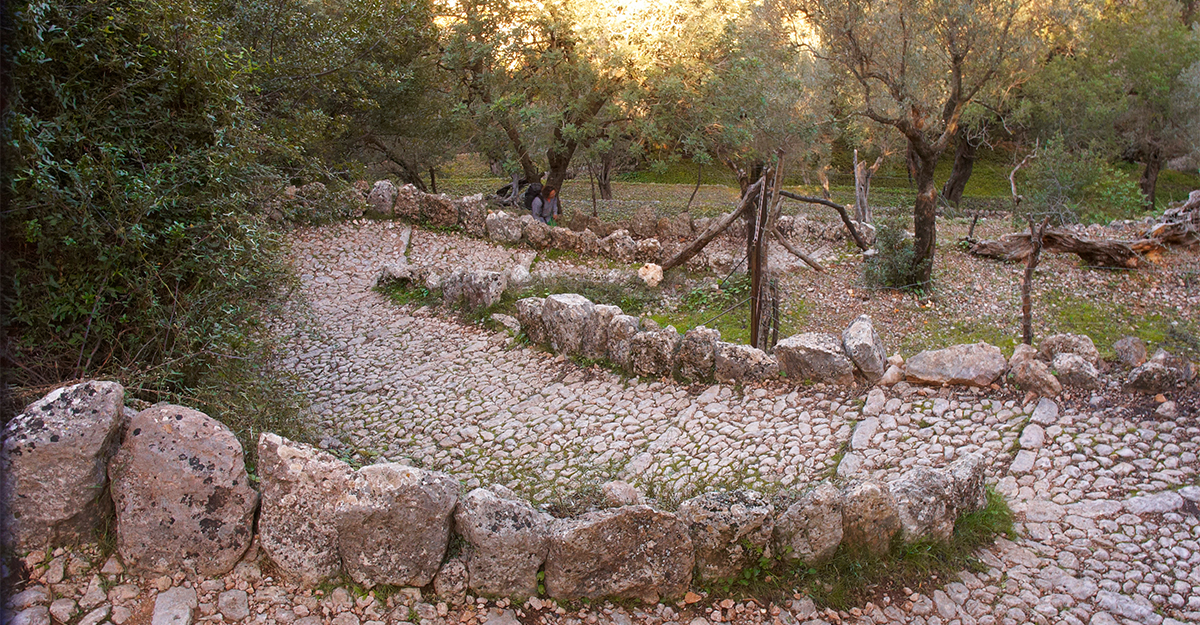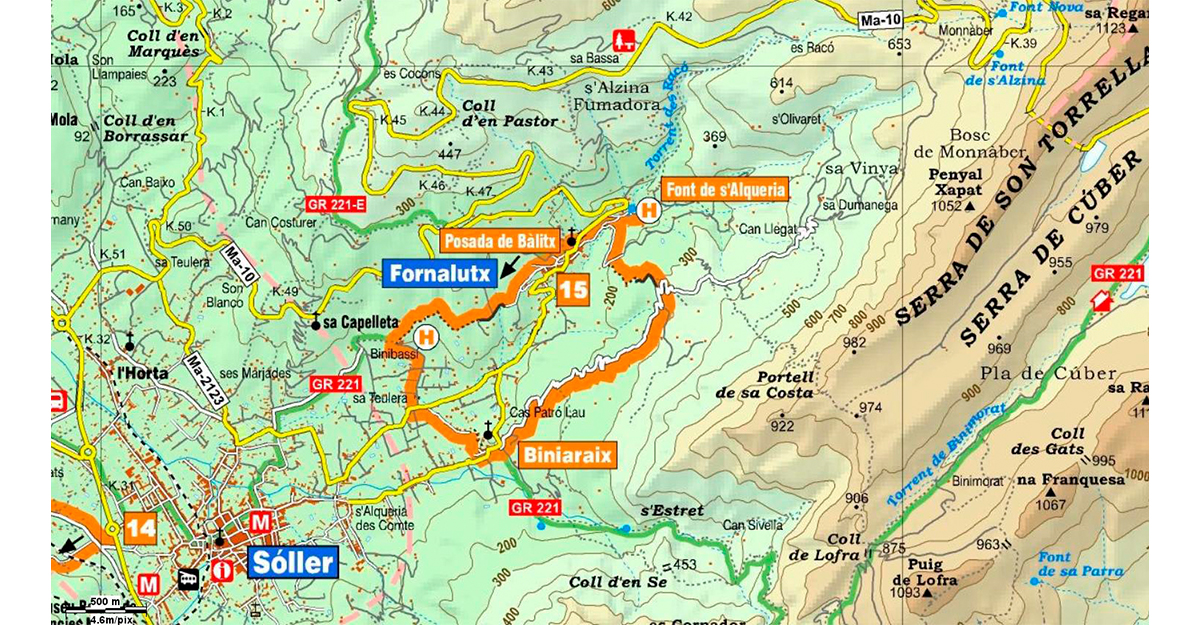Track GPX
In order to use the GPS track you must have installed an application that reads this type of files, such asWikiloc, Tracklia, Geo Tracker o GPX Viewer.
Fornalutx: roads and paths
The village of Fornalutx has conserved its traditional architectural makeup, with cobbled and stepped streets, painted roof tiles, niches, big houses and watchtowers. In conjunction, it is considered to be one of the most beautiful architectural ensembles in Spain.
Starting out in the square where the Church of the Nativity of Mary stands, you can walk along Carrer de Sant Sebastià, a street featuring a former inn known as Posada de Bàlitx. Continue along Carrer de Sant Joan, which features another big house called Can Bisbal. A little further on, you reach the cemetery, enriched with examples of Modernist art. A track linking up with a cobbled path leads to the hamlet of Binibassí, originally an Islamic farmstead. The waters of a nearby spring were channelled into an open irrigation gutter, used to power a water mill. The spring still supplies water to a public washing place and it is used to irrigate the surrounding kitchen gardens and orchards. The big houses all feature a defensive tower, olive press and chapel. The path links up with the GR 221 Dry Stone Route from Sóller, which curves round toward Biniaraix.
Built on a hill and declared a historical ensemble of cultural interest, the hamlet of Biniaraix is reached along a stepped path. Standing in its little square is the 16th century Church of the Immaculate Conception. Close to the hamlet’s public washing place is a house called Cas Don, featuring the coat of arms of the Pinopar family. This is the starting point of the old road to Lluc (the GR 221), which leads into Biniaraix ravine, declared an item of cultural interest due to its rich variety of features, including hillside terraces, stone shelters and the path itself, the best constructed in the whole of the Tramuntana mountains. If you climb up Camí de Monnàber, the path leads to an area known as Ses Planes, which overlooks the village of Fornalutx. The village can be reached along Camí des Creuer, while Camí des Mas leads to a spring called Font de s’Alqueria (5), close to the torrent. In Carrer de sa Font, you can see the painted tiles of two houses, Es Poador and Can Xoroi, the last of which still has an olive press. You can also see the tower of Ca n’Arbona, now the town hall. In Carrer de Cas Metge Mayol, the tower of another house, Casa d’Amunt, can be seen. This was formerly an inn known as Posada de Montcaire.
The GR 221 dry stone route passes through the municipality of Fornaultx. All the official information can be found at https://caminsdepedra.conselldemallorca.cat/-/variant-e-sa-coste-1
Related information
-
Fornalutx's route
Download






